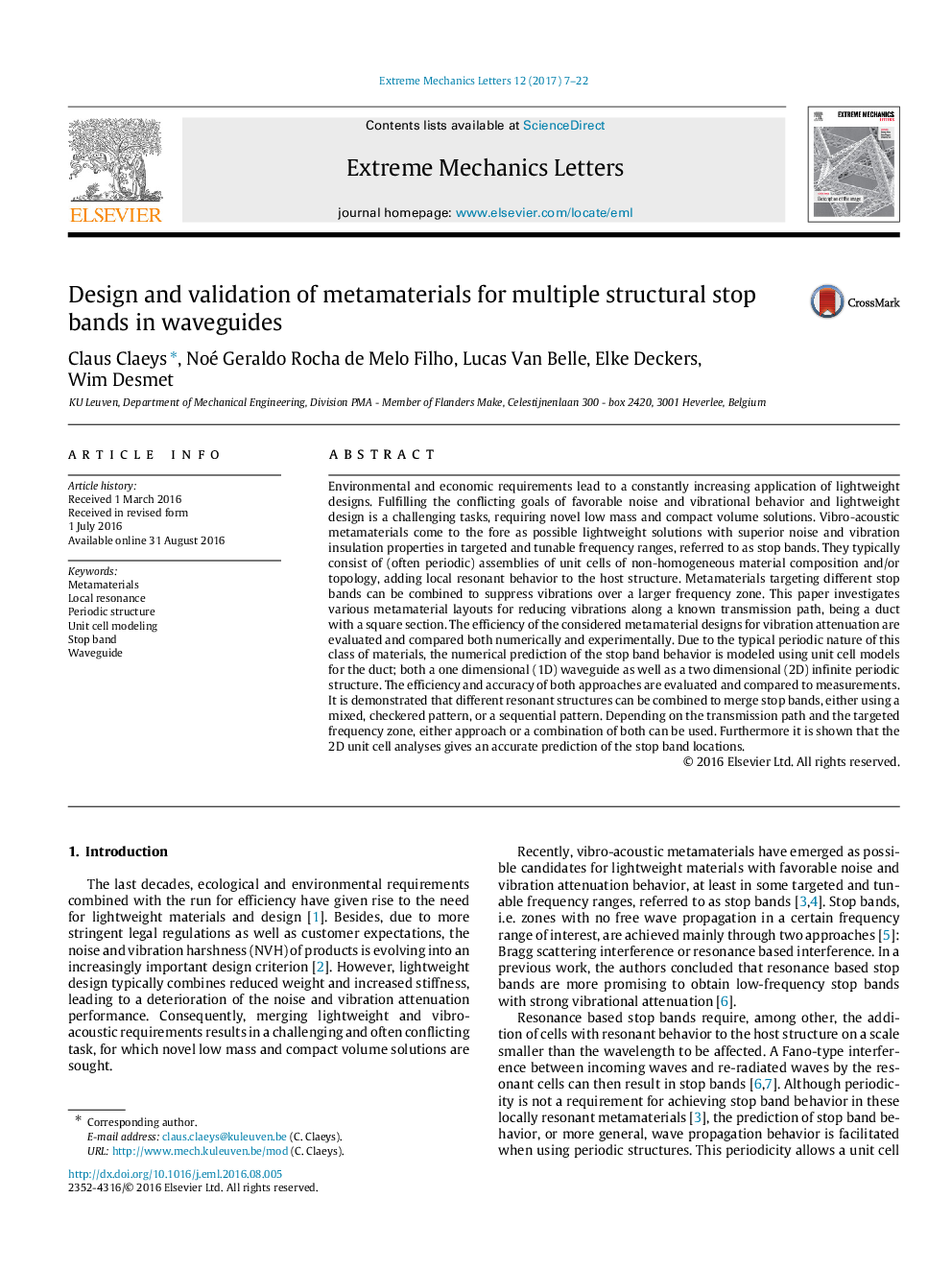| کد مقاله | کد نشریه | سال انتشار | مقاله انگلیسی | نسخه تمام متن |
|---|---|---|---|---|
| 5014453 | 1463300 | 2017 | 16 صفحه PDF | دانلود رایگان |
Environmental and economic requirements lead to a constantly increasing application of lightweight designs. Fulfilling the conflicting goals of favorable noise and vibrational behavior and lightweight design is a challenging tasks, requiring novel low mass and compact volume solutions. Vibro-acoustic metamaterials come to the fore as possible lightweight solutions with superior noise and vibration insulation properties in targeted and tunable frequency ranges, referred to as stop bands. They typically consist of (often periodic) assemblies of unit cells of non-homogeneous material composition and/or topology, adding local resonant behavior to the host structure. Metamaterials targeting different stop bands can be combined to suppress vibrations over a larger frequency zone. This paper investigates various metamaterial layouts for reducing vibrations along a known transmission path, being a duct with a square section. The efficiency of the considered metamaterial designs for vibration attenuation are evaluated and compared both numerically and experimentally. Due to the typical periodic nature of this class of materials, the numerical prediction of the stop band behavior is modeled using unit cell models for the duct; both a one dimensional (1D) waveguide as well as a two dimensional (2D) infinite periodic structure. The efficiency and accuracy of both approaches are evaluated and compared to measurements. It is demonstrated that different resonant structures can be combined to merge stop bands, either using a mixed, checkered pattern, or a sequential pattern. Depending on the transmission path and the targeted frequency zone, either approach or a combination of both can be used. Furthermore it is shown that the 2D unit cell analyses gives an accurate prediction of the stop band locations.
Journal: Extreme Mechanics Letters - Volume 12, April 2017, Pages 7-22
